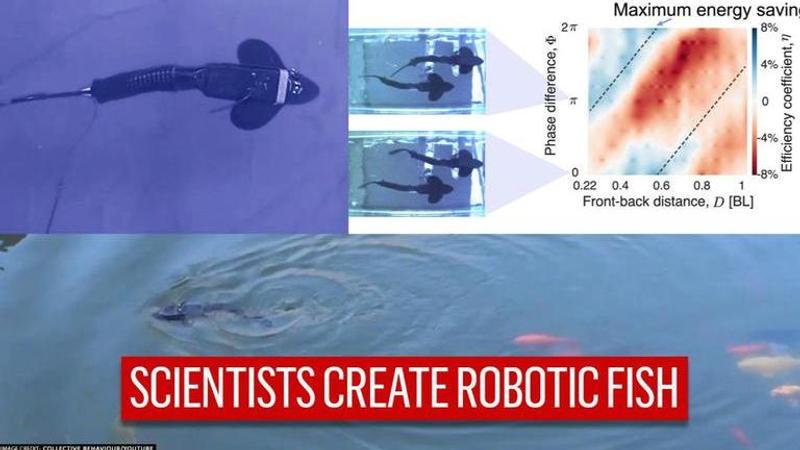Published 18:09 IST, October 28th 2020
Scientists create 'Robotic Fish' to study swimming pattern in schooling fishes
A recent study reveal how fishes have the energy of swimming in schools. As a part of the study, a ‘robotic fish’ was designed to find out how fishes coordinate

A recent study published in the journal ‘Nature Communications’ reveals how fishes have the energy of swimming in schools. As a part of the study, a ‘robotic fish’ was designed to find out how schooling fishes coordinate their movement to benefit from the vortices shed by others. The robotic fish helped the scientists to measure directly the energy consumption associated with swimming together in pairs.
How schooling fishes coordinate?
It was observed that a strategy called vortex phase matching is put to use in which the fishes adjust their tail beat relative to their neighbours. By this strategy the fish-like robots could benefit hydrodynamically. The study said, “Experiments with pairs of freely-swimming fish reveal that followers exhibit this strategy, and that doing so requires neither a functioning visual nor lateral line system. Our results are consistent with the hypothesis that fish typically, but not exclusively, use vortex phase matching to save energy”.
(The robotic fish platform employed to investigate hydrodynamic benefits of schooling. Image Credits: Nature.com)
The bio-mimetic robotic fish helped in evaluating the costs and benefits of swimming together. The robotic fish which was constructed was 45cm in length and 800g in mass. The motion of the servomotors was controlled using a bio-inspired controller called a central pattern generator. The study concluded that “swimming in pairs is both the most common configuration found in natural fish populations”.
(Robotic fish save energy by vortex phase matching (VPM). Image Credits: Nature.com)
In order to evaluate the energetics of swimming together, experiments were conducted on the pair of robotic fish in flow tanks. As step one, the fish of individually swimming fish was measured and then the swimming speed of the flow tank was set at the same pace. This was done to ensure that the conditions in the flow tank are similar to those of the free-swimming robot. As a part of the study, 10,000 trials were conducted and fish’s movements while swimming alone and in pairs were compared. The result highlighted a clear difference in the amount of energy consumed by the robotic fish when they swam in pair and when they would swim individually.
(Image Credits: Youtube/CollectiveBehaviour)
Updated 18:08 IST, October 28th 2020






